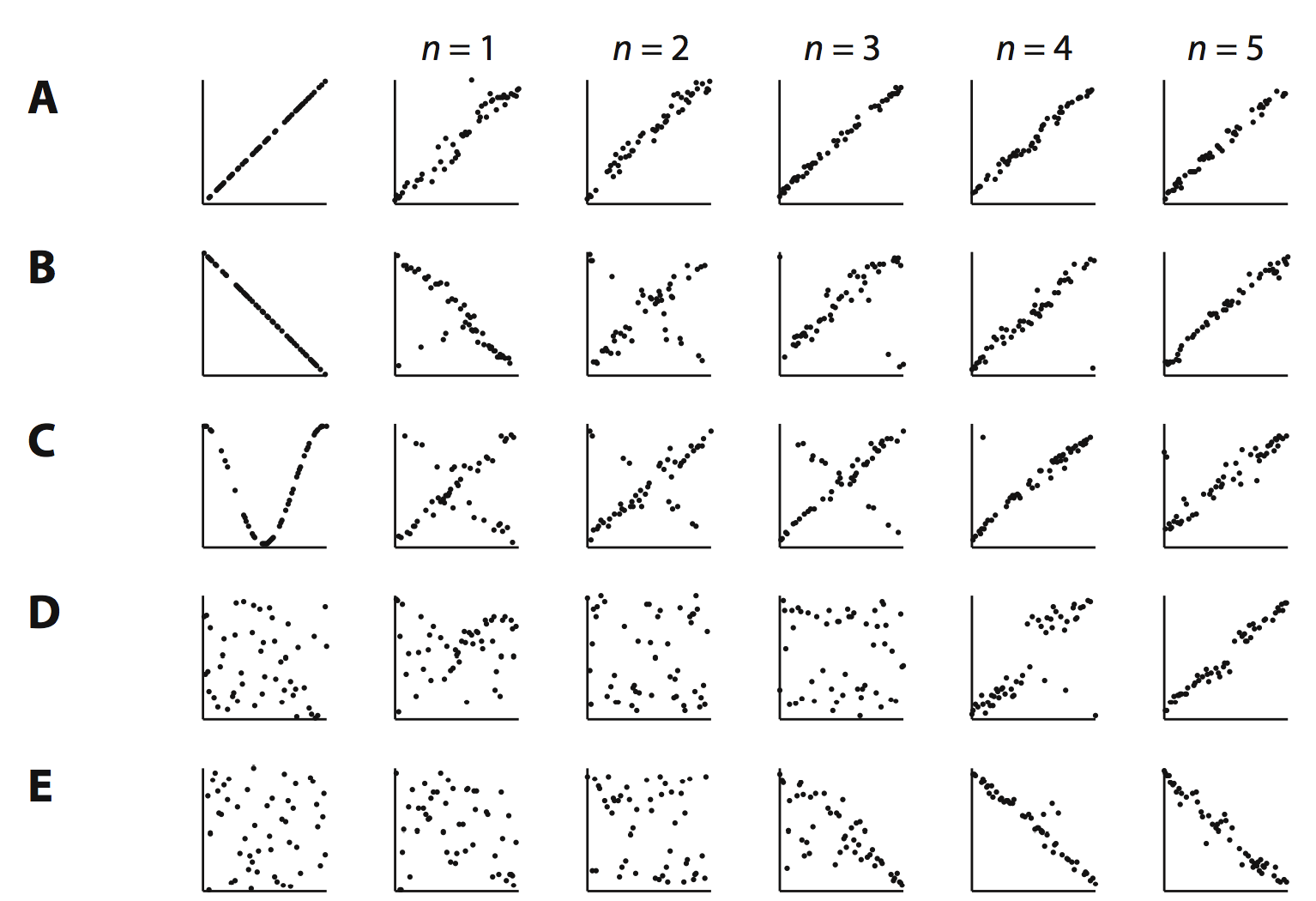I don’t like to act too knowledgable about society, but I’m ready to conjecture law: “Peoples will interpret patterns into the phenomena that affect their lives, even phenomena without patterns. Culture amplifies pareidolia.”
It’s interesting when those patterns are random, as in weather and gambling. “Random” is a pretty good model for weather outside the timescale of days. But we can probably count on every human culture to have narratives that give weather apprehensible causes. Gambling is random by definition, but that doesn’t stop the emergence of gambling “systems” that societies continue to honor with meaningfulness. Societies do not seem to permit impactful events to be meaningless.
This is all easy to illustrate in fine work by Kalish et al. (2007). The image above shows five series (rows) of people learning a pattern of dots from the person before them, one dot at a time, and then teaching it to the next person in the same way. Each n (each column) is a new person in the “cultural” transmission of the pattern. The experiment starts with some given “true” pattern (the first column).
The first row of the five tells a pretty clean story. The initial pattern was a positive linear function that people learned and transmitted with ease. But the second and third rows already raise some concern: the initial patterns were more complicated functions that, within just a couple of generations, got transformed into the same linear function as in the first row. This is impressive because the people were different between rows; Each row happened without any awareness of what happened in the other rows — people had only the knowledge of what just happened in the cell to their immediate left. Treating the five people in rows two or three as constituting a miniature society, we can say that they collectively simplified a complicated reality into something that was easier to comprehend and communicate.
And in the fourth and fifth rows the opposite happens: Subjects are not imposing their bias for positive lines on a more complicated hidden pattern, but on no pattern at all. Again, treating these five people as a society, their line is a social construct that emerges reliably across “cultures” from nothing but randomness. People are capable of slightly more complex cultural products (the negative line in the fifth row) but probably not much more, and probably rarely.
The robustness of this effect gives strong evidence that culture can amplify the tendencies of individuals toward pareidolia — seeing patterns in noise. It also raises the possibility that the cultural systems we hold dear are built on noise. I’m betting that any work to change such a system is going to find itself up against some very subtle, very powerful social forces.



